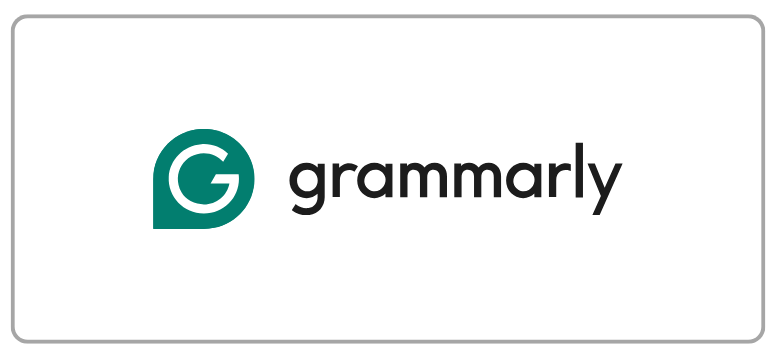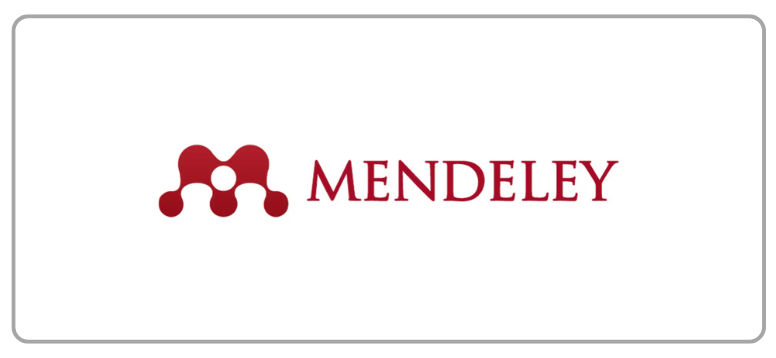The Marketing Power of TikTok: A Content Analysis in Higher Education
DOI:
https://doi.org/10.21512/bbr.v13i2.8014Keywords:
marketing power, TikTok, content analysis, higher educationAbstract
Nowadays, social media is a common thing for every generation. Aside from entertainment and education, there are numerous business applications for this technology. By using social media, marketers can display their products in creative ways, such as creating videos. One of the most popular social media is TikTok. The research aimed to achieve more profound effects of TikTok for promoting higher education. The research applied a qualitative description by analyzing the content of a TikTok account (@uhamkapmb). Data were taken from the contents from August to October 2021. Then, the research calculated views, comments, likes, profile views, and video views of the contents and analyzed them. Supplementary, to evaluate @uhamkapmb’s TikTok account, the researchers shared surveys about customers’ satisfaction with the contents. The respondents were prospective and current students of UHAMKA with an age range of 18 to 25 years. Around 100 respondents were observed, and the data were processed using MS Excel. The result shows a significant increase in September (19.077,84) which is more than in August (6.941,42) and October (8.690,2) 2021. Moreover, the famous content of @uhamkapmb is re-registration. In addition, the customers agree that @uhamkapmb’s contents are already complete, precise, easy to reach, and interesting.
References
Anderson, K. E. (2020). Getting acquainted with social networks and apps: It is time to talk about TikTok. Library Hi Tech News, 37(4), 7–12. https://doi.org/10.1108/LHTN-01-2020-0001
Alifa, M. P., Aransih, M. P., Dita, D. A. A., & Edison, R. E. (2018). "Like" and "love" responses as addiction factors on social media. In International Conference of Mental Health, Neuroscience, and Cyber-psychology (pp. 105–109). https://doi.org/10.32698/25265
Ashley, C., & Tuten, T. (2015). Creative strategies in social media marketing: An exploratory study of branded social content and consumer engagement. Psychology and Marketing, 32(1), 15–27. https://doi.org/10.1002/mar.20761
Azpeitia, J. (2021). Social media marketing and its effects on TikTok users (Bachelor’s thesis). Vaasan Ammattikorkeakoulu University of Applied Sciences.
Basch, C. H., Yalamanchili, B., & Fera, J. (2022). #Climate change on TikTok: A content analysis of videos. Journal of Community Health, 47, 163–167. https://doi.org/10.1007/s10900-021-01031-x
Common Sense Media. (2009). Is social networking changing childhood? Retrieved from https://www.commonsensemedia.org/press-releases/is-social-networking-changing-childhood
Forman, J., & Damschroder, L. (2007). Qualitative content analysis. In L. Jacoby & L. A. Siminoff, (Eds.), Empirical methods for bioethics: A primer (Advances in bioethics, Vol. 11) (pp. 39–62). Emerald Group Publishing Limited.
Haenlein, M., Anadol, E., Farnsworth, T., Hugo, H., Hunichen, J., & Welte, D. (2020). Navigating the new era of influencer marketing: How to be successful on Instagram, TikTok, & Co. California Management Review, 63(1), 5–25. https://doi.org/10.1177/0008125620958166
Iqbal, M. (2022). TikTok revenue and usage statistics (2022). Retrieved January 7th 2022 from https://www.businessofapps.com/data/tik-tok-statistics/
Jaffar, B. A., Riaz, S., & Mushtaq, A. (2019). Living in a moment: Impact of TicTok on influencing younger generation into micro-fame. Journal of Content, Community & Communication, 10(5), 187–194. https://doi.org/10.31620/JCCC.12.19/19
Kassamali, B., Villa-Ruiz, C., Mazori, D. R., Min, M., Cobos, G. A., & LaChance, A. H. (2021). Characterizing top educational TikTok videos by dermatologists in response to “TikTok and dermatology: An opportunity for public health engagementâ€. Journal of the American Academy of Dermatology, 85(1), e27–e28. https://doi.org/10.1016/j.jaad.2021.02.051
Kemp, S. (2021). Digital 2021: Global overview report. Retrieved from https://datareportal.com/reports/digital-2021-global-overview-report
Li, Y., Guan, M., Hammond, P., & Berrey, L. E. (2021). Communicating COVID-19 information on TikTok: A content analysis of TikTok videos from official accounts featured in the COVID-19 information hub. Health Education Research, 36(3), 261–271. https://doi.org/10.1093/her/cyab010
Li, Y., Xu, X., Song, B., & He, H. (2020). Impact of short food videos on the tourist destination image—Take Chengdu as an example. Sustainability, 12(17), 1–13. https://doi.org/10.3390/SU12176739
Ma, Y., & Hu, Y. (2021). Business model innovation and experimentation in transforming economies: ByteDance and TikTok. Management and Organization Review, 17(2), 382–388. https://doi.org/10.1017/mor.2020.69
Mohsin, M. (2021). 10 TikTok statistics that you need to know in 2021 [Infographic]. Retrieved January 9th 2021 from https://www.oberlo.co.uk/blog/tiktok-statistics
Mou, J. B. (2020). Study on social media marketing campaign strategy--TikTok and Instagram (Master thesis). Massachusetts Institute of Technology.
Patton, M. Q. (2002). Two decades of developments in qualitative inquiry: A personal, experiential perspective. Qualitative Social Work, 1(3), 261–283. https://doi.org/10.1177/1473325002001003636
Peng, L. (2021). Impact of Tik Tok on digital marketing based on case studies and SWOT analysis. In IC4E 2021: 2021 12th International Conference on E-Education, E-Business, E-Management, and E-Learning (pp. 337–340). https://doi.org/10.1145/3450148.3450188
Poston, B. (2009). An exercise in personal exploration: Maslow’s hierarchy of needs. The Surgical Technologist. 41(8), 347–353.
Presley, C. L., Pulsipher, K. J., Rietcheck, H. R., Szeto, M. D., Laughter, M. R., & Dellavalle, R. P. (2022). Reply to “dermatologists in social media: A study on top influencers, posts, and user engagementâ€: Dermatologist influencers on TikTok. Journal of the American Academy of Dermatology, 86(2), e71–e73. https://doi.org/10.1016/j.jaad.2021.01.090
Rangaswamy, A., Moch, N., Felten, C., Van Bruggen, G., Wieringa, J. E., & Wirtz, J. (2020). The role of marketing in digital business platforms. Journal of Interactive Marketing, 51(1), 72–90. https://doi.org/10.1016/j.intmar.2020.04.006
Sandelowski, M. (1991). Telling stories: Narrative approaches in qualitative research. Image: The Journal of Nursing Scholarship, 23(3), 161–166. https://doi.org/10.1111/j.1547-5069.1991.tb00662.x
Sandelowski, M. (2000). Whatever happened to qualitative description? Research in Nursing & Health, 23(4), 334–340. https://doi.org/10.1002/1098-240x(200008)23:4<334::aid-nur9>3.0.co;2-g
Sashi, C. M. (2012). Customer engagement, buyer-seller relationships, and social media. Management Decision, 50(2), 253–272. https://doi.org/10.1108/00251741211203551
Sierro, T. J., Young, P. M., Kassabian, S. K., Wu, K. K., & Armstrong, A. (2021). Reply to “comment on ‘dermatologists in social media: A study on top influencers, posts, and user engagement’: Dermatologist influencers on TikTokâ€. Journal of the American Academy of Dermatology, 86(2), e75. https://doi.org/10.1016/j.jaad.2021.01.089
Su, Y., Baker, B. J., Doyle, J. P., & Yan, M. (2020). Fan engagement in 15 seconds: Athletes’ relationship marketing during a pandemic via TikTok. International Journal of Sport Communication, 13(3), 436–446. https://doi.org/10.1123/ijsc.2020-0238
Sun, T., Lim, C. C., Chung, J., Cheng, B., Davidson, L., Tisdale, C., ... & Chan, G. C. (2021). Vaping on TikTok: A systematic thematic analysis. Tobacco Control, 1–4. https://doi.org/10.1136/tobaccocontrol-2021-056619
Van der Bend, D. L. M., Jakstas, T., Van Kleef, E., Shrewsbury, V. A., & Bucher, T. (2022). Making sense of adolescent-targeted social media food marketing: A qualitative study of expert views on key definitions, priorities and challenges. Appetite, 168, 1–14. https://doi.org/10.1016/j.appet.2021.105691
Yosep, M. A., Mohamed, M., Yusliza, M. Y., Saputra, J., Muhammad, Z., & Bon, A. T. (2021). Does digital marketing platforms affect business performance? A mini-review approach. In Proceedings of the 11th Annual International Conference on Industrial Engineering and Operations Management (pp. 4372–4386).
Downloads
Published
How to Cite
Issue
Section
License
Copyright (c) 2022 Deni Adha Akbari, Bella Jastacia, Edi Setiawan, Dwi Widya Ningsih

This work is licensed under a Creative Commons Attribution-ShareAlike 4.0 International License.
Authors who publish with this journal agree to the following terms:
a. Authors retain copyright and grant the journal right of first publication with the work simultaneously licensed under a Creative Commons Attribution License - Share Alike that allows others to share the work with an acknowledgment of the work's authorship and initial publication in this journal.
b. Authors are able to enter into separate, additional contractual arrangements for the non-exclusive distribution of the journal's published version of the work (e.g., post it to an institutional repository or publish it in a book), with an acknowledgment of its initial publication in this journal.
c. Authors are permitted and encouraged to post their work online (e.g., in institutional repositories or on their website) prior to and during the submission process, as it can lead to productive exchanges, as well as earlier and greater citation of published work.
USER RIGHTS
All articles published Open Access will be immediately and permanently free for everyone to read and download. We are continuously working with our author communities to select the best choice of license options, currently being defined for this journal as follows: Creative Commons Attribution-Share Alike (CC BY-SA)





















